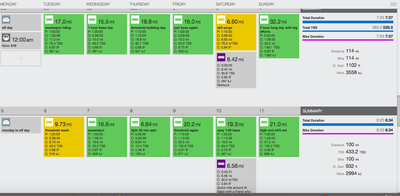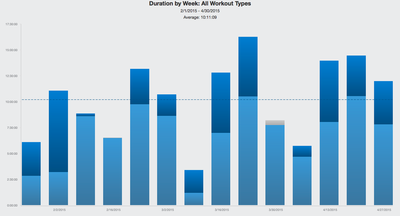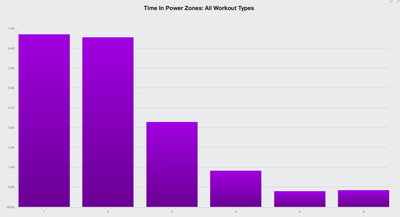The Three Ingredients to Building Fitness
I can’t tell you how many times I hear of someone buying a bike or new pair of shoes because they want to “get in shape”. What I often find out is that this individual went out and worked really hard for 1 or 2 days and then either came down with an injury or burned themselves out rather quickly due to the sheer volume of work they put in. This often will sound like, “I haven’t ridden a bike in a while, but I just rode for 2 hours on Saturday”. Or, “I ride 3 times a week with a group, and they are all really hard efforts”. I hope after reading this entry, you realize there is a safe and effective way to build your fitness that will not only help your performance, but also help your longevity within your sport. These safe and effective ingredients are frequency, volume, and intensity. The rest of the entry will touch on when to incorporate each one of these ingredients.
Avoid Injury
Before I talk about frequency, volume, and intensity, it is important that I put a disclaimer here that you don’t try to build all three at the same time. Each one of these are a stressor to your body and current level of fitness or performance. By increasing all three at the same time you could overtrain and come down with sickness or an injury. Rather, you should focus on one ingredient at a time and work at it until you have a solid foundation in which to advance upon. Experienced athletes can get away with building 2 of them at the same time if they have a solid level of fitness, but even then proper steps should be followed in building one’s performance. I urge you to focus on just one at a time in your initial steps to building a better you and you’ll find that your body will thank you over the long haul.
Frequency
I’m starting with frequency because this is the first ingredient that you should start with as well. When first starting out with your new bike, your goal shouldn’t be to ride fast or ride far. Rather, your first goal should be to ride frequently. Yes, you will want to get out there and work hard, but that will come with time and will only be effective if you’ve laid a foundation beforehand. This foundation is the frequency in which you train. So what I do with all of my athletes that are looking for increased performance is try and build their frequency before we do anything else. This usually means starting at 3-4 days/week and trying to build up to 6-7 days/week. Your workouts during this time should be casual in intensity (think 50-60%) and generally stay at the same duration (example: 45-60 min) that you have time for. During this portion of the build, you don’t want to be stressed about certain intervals or mileage, that will come with time. Your only thought right now is training your body to get out on the bike and build a consistent routine. As your body becomes more accustomed to riding each day and you become better and making time for this, then that is when the volume or intensity can start to increase. A good general rule of thumb that I use with my athletes is that we don’t do really hard efforts until they are up to a general base level of fitness that is usually signaled by 5-6 days a week of training. This all depends on the athlete and their past, but this is a good general idea.
Volume
I’ll touch on volume second, but intensity could be here as well. These two ingredients are the ones that can be substituted based on time and life demands.
Volume is interesting in that it is different to everyone. For someone going out for their first long ride that could mean a 20 mile journey. For others preparing for Ironman that could be a 100 mile century. With that being said, it is good to know that volume is different for all and the requirements that come with the race. We will touch on specifics later in this series, but for now lets just lump all volume in together.
So, when to add Volume you ask? Simple, when you feel comfortable with the frequency in which you’ve built. I generally start adding weekly time as a whole for new athletes opposed to just 1 or 2 big days. The reason for doing so is because if you give a new athlete all 1 hour workouts and then ask for a 3 hour workout on Sunday, this is a huge increase in workload (overtraining possibly) and a huge increase in stress level (mentally) as they are unsure if they can handle it. So a good strategy to implement here would be weekly adjustments in volume such as add 1 hour/week.
Example: 1 hour a day, 6x/week = 6 hours total
You could increase to 1:15 a day, 6x/week for a new total now of 7:30 hour a week.
- This example is much easier on the mind than 5x1 hour and 1x3 hour for 8 hours a week. That being said, there is a time for the 2nd option, but again this comes in with specific training and periodization that will come at a later point in this series.
There are always going to be different circumstances for each individuals life, but these principles are widely accepted and should be put into your plan if you are just starting.
Intensity
This is the final piece to the puzzle but could be switched with Volume if you are a time-ridden athlete or later on in the build. Again, it all depends on where you are at and what your life is looking like.
When building intensity it is very important that you know what your goals are and what type of intensity you should be working at for specific training. Again, a later blog in the series will touch on this. Depending on what you are looking for, there are intensities that range from recovery to threshold to maximal oxygen uptake to anaerobic to neuromuscular. You can see how I could rant about this for a long time! The important part to know is that whatever your goal is with fitness, there is a specific intensity that you should be working on to maximize your results. Hopefully after this series you have a better idea of all of these and can start to understand what type of training should accompany you on your path to better fitness or performance.
Part 3 Intro
You’ve bought a bike, you understand some of the basic principles to building fitness, now it is time to set a goal for what you want to accomplish. The next entry will focus on breaking down your goal into process driven tasks that you can tackle in a timely manner. By having a goal in place you can then start to look at specifics needed to build fitness/performance and start bringing your entire picture together!
Week 1: You just bought a new bike
Week 2: How to build fitness (volume, intensity, frequency)
Week 3: Realizing your intentions and setting goals
Week 4: Using metrics (heart rate/power) and setting baselines.
Week 5:Periodizing your season and goals
Week 6: Specificity of training and its importance
Week 7: Peaking for your goal



 RSS Feed
RSS Feed
